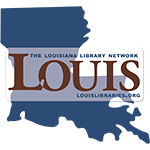Human Geography
Topic outline
-
Welcome to Introduction to Human Geography!
Introduction to Human Geography adheres to the scope and sequence of a typical, one-semester introductory human geography course. It offers comprehensive coverage of core concepts, foundational scholars, and emerging theories. The textbook presents section reviews with rich questions, discussions that help students apply their knowledge, and features that draw learners into the discipline meaningfully.
This text was adapted from Dorrell, David; Henderson, Joseph; Lindley, Todd; and Connor, Georgeta, "Introduction to Human Geography (2nd Edition)" (2019). Geological Sciences and Geography Open Textbooks. 2.
which had been updated significantly to reflect the latest research and current, relevant examples.Changes made in Introduction to Human Geography are described in the preface to help instructors transition to the adaption of the text. The second edition of Introduction to Human Geography 2e by OpenStax is available in web view.
This course and its contents are licensed under a Creative Commons Attribution 4.0 International License by LOUIS: The Louisiana Library Network, except where otherwise noted
COURSE LEARNING OUTCOMES: Upon successful completion of this course, the student will be able to:
- Investigate ways the environment has influenced human inhabitance, and analyze the effect that human settlement and activity have had on the environment (CLO 1)
- Use social studies skills to access, interpret, and apply information from a variety of sources (CLO 2)
- Define key concepts in cultural geography (CLO 3)
- Recognize and describe the patterns that exist between people and place (CLO 4)
- Analyze and interpret various map representations of the world (CLO 5)
- Interpret human systems and the resulting landscapes (CLO 6)
- Evaluate demographic data (CLO 7)
- Plan for your future because you understand more about the language, ethnic, religious, and economic differences of people all over the world (CLO 8)
Structure of the Course
This course includes 13 Modules which cover one of 13 chapters in the textbook: Introduction to Human Geography. Each module includes a brief introduction text, a link to the Pressbooks chapter, and any additional resources and assignments.
Navigating the Course
This course is set up in Modules covering various topics which may be accessed from the course navigation menu on the left or by scrolling below. Modules may be collapsed in the menu and in the body of the course to minimize scrolling. Each module includes the relevant chapters followed by various activities, which may include discussion forums, listening activities and quizzes, practice quizzes, module tests, and other relevant activities as appropriate for each module. Many items are required and may be marked as completed automatically when the activity has been submitted (the broken check box), but others will marked as done by the student (the solid check box).Please move through the items below and continue through the Learner Support and Getting Started modules before moving on to Module 1. Be sure to check for announcements and due dates to stay on track. This course and its contents, developed by authors: Dr. Adam Dohrenwend, Juana Ibanez, Dr. Molly McGraw, Dr. Neusa Hidalgo Monroy Wohlgemuth, Rusti Liner, and Library Facilitator, Dr. Kayla Siddell are licensed under a Creative Commons Attribution 4.0 International License by LOUIS: The Louisiana Library Network, except where otherwise noted
This course and its contents, developed by authors: Dr. Adam Dohrenwend, Juana Ibanez, Dr. Molly McGraw, Dr. Neusa Hidalgo Monroy Wohlgemuth, Rusti Liner, and Library Facilitator, Dr. Kayla Siddell are licensed under a Creative Commons Attribution 4.0 International License by LOUIS: The Louisiana Library Network, except where otherwise noted -
This module contains all the items you should review and complete before you begin Module 1. Before moving on, be sure to:
- Check the News and Announcements Forum
- Read the Course Syllabus
- Introduce yourself to the class
- Read the instructions for the Q & A Forum
Good luck in the course!-
Use this forum to tell us a little about yourself and your interests. Some topic ideas:
- What is your field of study/research interest or concentration?
- What are you most interested in learning about in this class and why?
- Have you ever taken an online class before?
- Any other information you would like to share with your classmates, such as special interests or activities.
Post a picture! We look forward to meeting you.
-
Use this forum to ask your instructor any questions you have about the course. You may post at any time, and your instructor will respond here. Be as specific as possible.
Please keep in mind that others can see your posts, so do not post any personal information. If you have questions about your grade, please email your instructor directly. You can expect a response to posts and emails within 24 hours M-F, the next business day on weekends.
Subscription should be set to Auto.
- Check the News and Announcements Forum
-
Use the information in this module to customize the template to your needs. This module is currently hidden from students, and available for you to refer to throughout the semester.
-
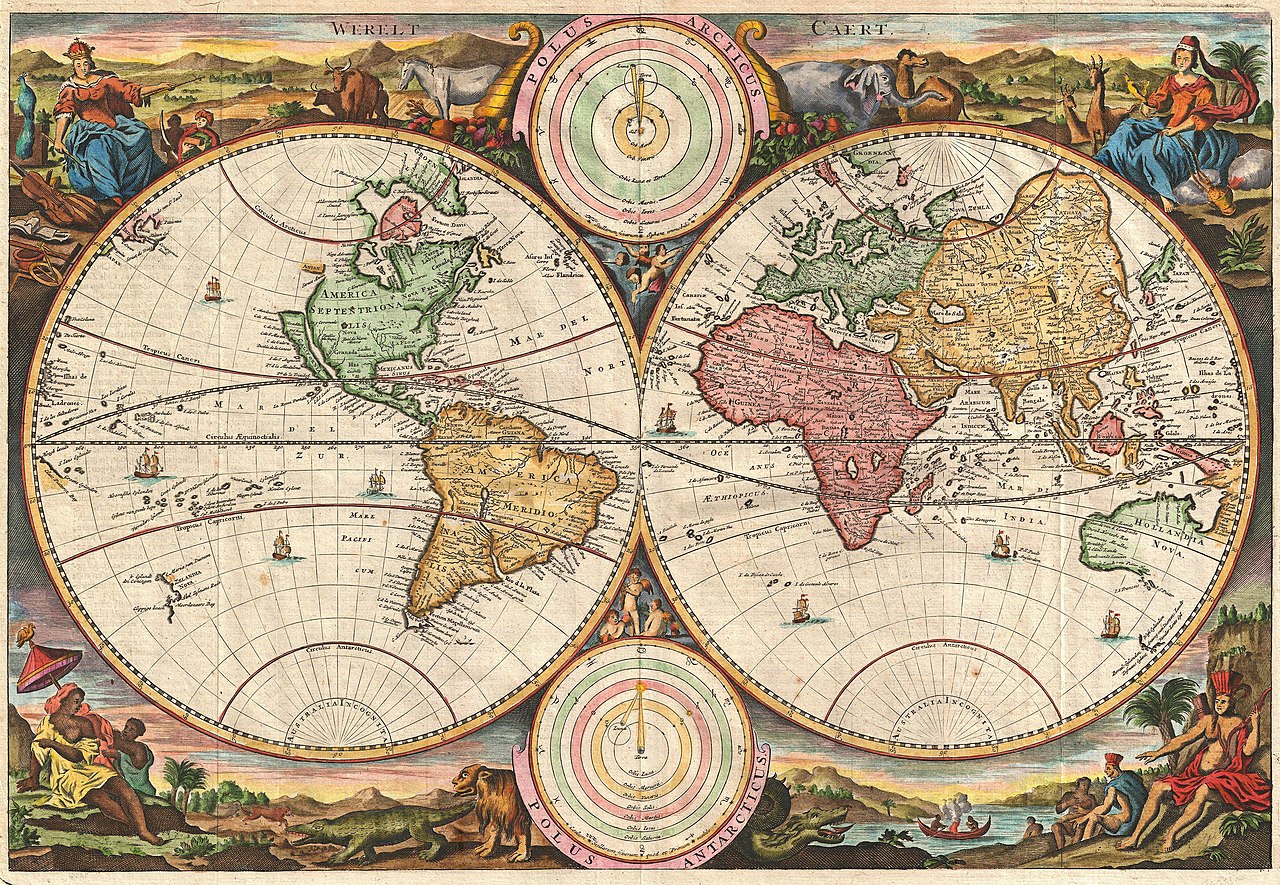 Geography is a diverse discipline that has some sort of connection to most every other academic discipline. This connection is the spatial perspective, which essentially means if a phenomenon can be mapped, it has some kind of relationship to geography. Studying the entire world is a fascinating subject, and geographical knowledge is fundamental to a competent understanding of our world. In this chapter, you will learn what geography is as well as some of the fundamental concepts that underpin the discipline. These fundamental terms and concepts will be interwoven throughout the text, so a sound understanding of these topics is critical as you delve deeper into the chapters that follow. By the end of the chapter, you will begin to think like a geographer.
Geography is a diverse discipline that has some sort of connection to most every other academic discipline. This connection is the spatial perspective, which essentially means if a phenomenon can be mapped, it has some kind of relationship to geography. Studying the entire world is a fascinating subject, and geographical knowledge is fundamental to a competent understanding of our world. In this chapter, you will learn what geography is as well as some of the fundamental concepts that underpin the discipline. These fundamental terms and concepts will be interwoven throughout the text, so a sound understanding of these topics is critical as you delve deeper into the chapters that follow. By the end of the chapter, you will begin to think like a geographer.(Stoopendaal Map of the World in two Hemispheres in the Public Domain).
Upon completion of this module, you will be able to:- Define: Geography and its subfields. (MLO 1)
- Explain: the importance of maps and some tools used to create them. (MLO 2)
- Explain: the concept of places and how they are characterized from a spatial perspective. (MLO 3)
- Describe: the various types of diffusion. (MLO 4)
- Link: the discipline of geography with other academic disciplines (MLO 5)
To achieve these objectives: Read the Module 1 Introduction
- Read Chapter 1: Introduction to Geography in Introduction to Human Geography
- Complete the discussion questions and assignment 1
Module Pressbooks Resources and Activities
You will find the following resources and activities in this module at the Pressbooks website. Click on the links below to access or complete each item.
-
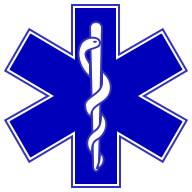
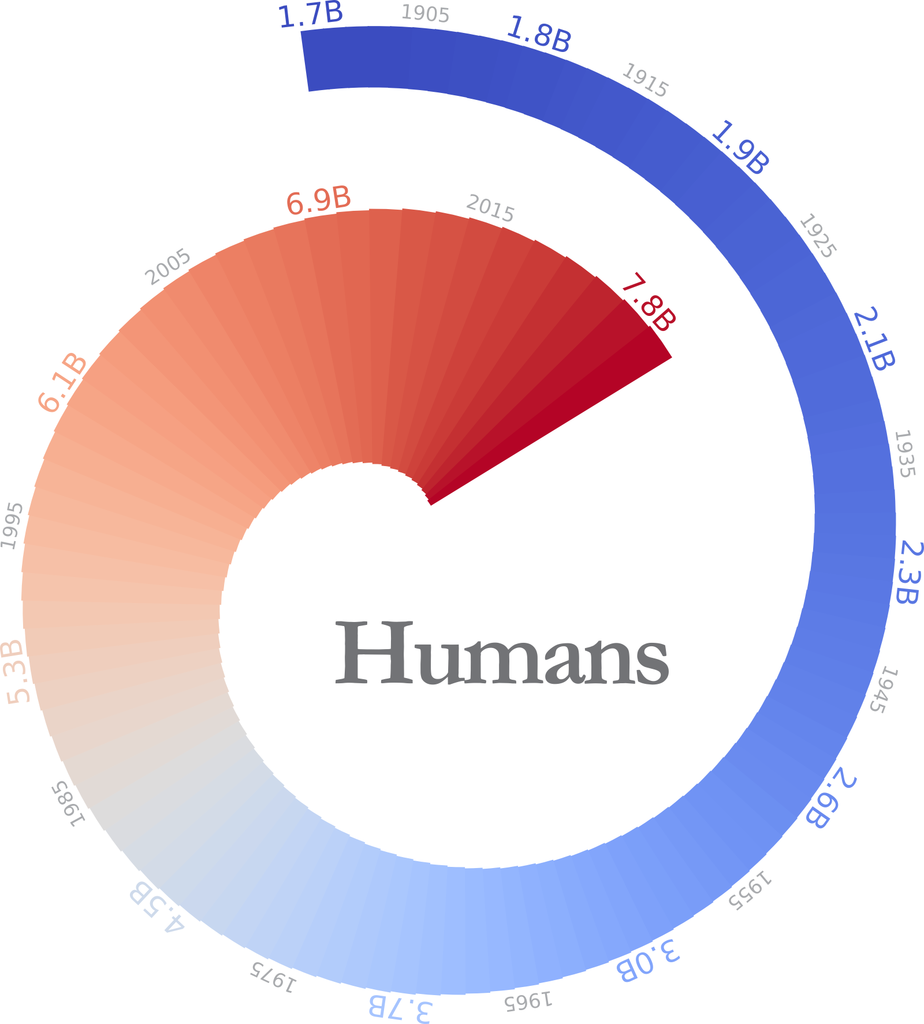
In this chapter we will look at the human population. We'll look at the size of it, and whether it may be growing or shrinking. We'll explore the role of scale. We'll look at differences between countries. And we'll do all of this through the lens of spatiality. The world population is at 7.9 billion, an all-time high. In the space of a few centuries it has gone from less than one billion to more than seven, with projections of several billion more in the relatively near future.
https://www.census.gov/popclock/
Upon completion of this module, you will be able to:
- Discuss the spatial organization
of the human population. (MLO 1)
- Explain the dynamics of
population as they are reflected in fertility, morbidity, and mortality.
(MLO 2)
- Describe the relationship between population and other spatial phenomena such as living standards, agriculture, and health. (MLO 3)
- Link the development, migration, and population as a fluid self-balancing system. (MLO 4)
To achieve these objectives:
- Read the Module 2 Introduction
- Read Chapter 2, Population and Health in the textbook: Introduction to Human Geography
- Complete the Module 2 Assignment, Discussion Board Posts (3), Chapter Quiz, and H5P activities
Module Pressbooks Resources and Activities
You will find the following resources and activities in this module at the Pressbooks website. Click on the links below to access or complete each item.
- Discuss the spatial organization
of the human population. (MLO 1)
-

For most of the early human history transhumance or the seasonal migration of people following the herds as they move for new feeding grounds was the norm until about 65,000 when the first long-distance permanent migration (a permanent move to a new location) out of east Africa was believed to have happened taking them to all corners of the ecumene (inhabited areas of the world) over tens of thousands of years. Scientists disagree on the specific time periods; some studies suggest that the big move may have started 120,000 years ago. There is also disagreement on the reasons behind this mass migration. Significant evidence suggests that periodic climate change may have played a major role. The earliest evidence of Human remains in North America is also controversial, scientist tend to agree that the earliest evidence of human remains in North America dates to approximately 13,000 years ago, when humans are hypothesized to have crossed an ice bridge from Eastern Russia into Alaska during the last Ice Age, before spending the next several thousand years spreading throughout North and South America, and The Caribbean. However, recent footprints found at White Sands National Park in New Mexico provide the earliest evidence of human activity in the Americas over 23,000 years ago based on radiocarbon dating of seed layers above and below the footprints. This corresponds to the height of the last glacial cycle, during something known as the Last Glacial Maximum, and makes them the oldest known human footprints in the Americas.
Upon completion of this module, you will be able to:
- Recall: definitions of migration and associated significant terms (MLO 1)
- Explain: the geographic patterns of migration within and between countries as influenced by economic, sociocultural, political, and environmental factors in the contemporary historical period (MLO 2)
- Describe: the general relationship between demographic factors and migration across time (MLO 3)
- Link: factors of globalization to recent trends in migration (MLO 4)
To achieve these objectives:
- Read the Module 3 Introduction
- Read Chapter 3: Population and Health in the textbook: Introduction to Human Geography
- Complete the Module 3 Assignment, Discussion Board Posts (3), Chapter Figures
Module Pressbooks Resources and Activities
You will find the following resources and activities in this module at the Pressbooks website. Click on the links below to access or complete each item. Module Pressbooks Resources and Activities
You will find the following resources and activities in this module at the Pressbooks website. Click on the links below to access or complete each item.https://oer.galileo.usg.edu/geo-textbooks/2/ -
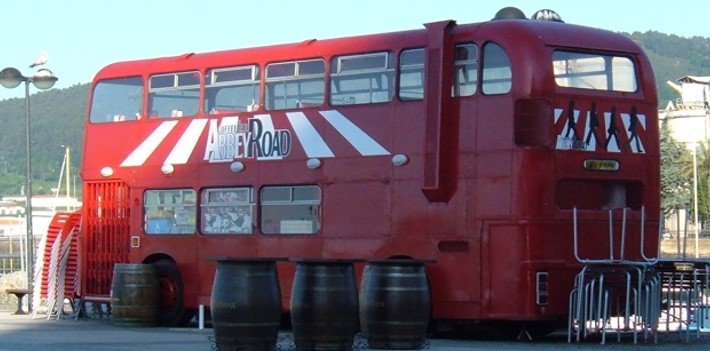
What is culture? Culture is learned behavior. Humans teach it to one another through mimicry or lessons. Humans learn behavior to meet their basic needs for food, water, air, shelter, and companionship. How we manifest those behaviors is expressed differently depending on where we live. How you relate to the rest of the world can be considered your “culture”. One benefit of this learned behavior is that it can help answer questions. Some of the questions that are answered are philosophical or ideological, for example, “Where did we come from?” or “What is acceptable behavior?” Other questions revolve around daily life. “How do we secure shelter, clothe ourselves, produce food, and transmit information?” Culture provides us with guidance for our lives. It both asks and answers questions. Children, from an early age, start asking “What is my place in the world?” Culture helps to answer that.
Figure 4.1 | Double Decker Bus
Double-decker bus referencing the Beatles in Ferrol, Spain near the historic Camino de Santiago. This is the intersection of two iconic cultural symbols. Both the bus and the pilgrimage route invite the public to take journeys, whether sonic or geographic.
Author | Dominica Ramírez Source | Original Work License | CC BY SA 4.0
Upon completion of this module, you will be able to:- Describe: the origins and diffusion of culture and globalization (MLO 1)
- Explain: how culture changes across space and time (MLO 2)
- Describe: popular and folk culture, diffusion, and the changing pace of globalization (MLO 3)
- Link: Globalization and cultural conflict (MLO 4)
To achieve these objectives:
- Read the Module 4 Introduction
- Read Chapter 4: Folk Culture and Popular Culture
- Complete the Assignment 4, Discussion questions, and review Chapter 4 figures
You will find the following resources and activities in this module at the Pressbooks website. Click on the links below to access or complete each item.
-
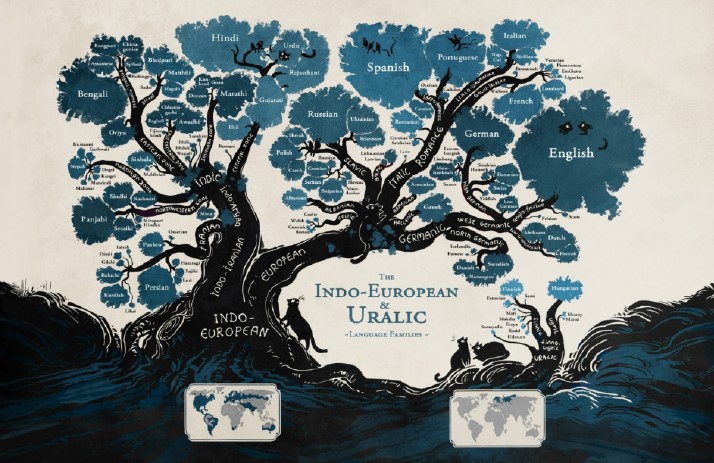 Artistic illustration of the Language Tree depicting the connections between Indo-European and Uralic languages (Courtesy of Tom Wrigley, Flickr, CC BY-NC-SA) Click the image for a more complete version of this language tree.Upon completion of this module, you will be able to:
Artistic illustration of the Language Tree depicting the connections between Indo-European and Uralic languages (Courtesy of Tom Wrigley, Flickr, CC BY-NC-SA) Click the image for a more complete version of this language tree.Upon completion of this module, you will be able to:- Describe: the differing bases of ethnic identity. (MLO 1)
- Explain: the relationship between ethnicity and personal identity (MLO 2)
- Describe: the degrees of relevance of ethnicity in a society (MLO 3)
- Link: ethnicity, race, and class as they relate to political power (MLO 4)
To achieve these objectives:
- Read the Module 5 Introduction
- Read Chapter 5: The Geography of Language in Introduction to Human Geography
- Complete the Module 5 assignment, Discussion questions, and Chapter 5 Quiz
Module Pressbooks Resources and Activities
You will find the following resources and activities in this module on the Pressbooks website. Click on the links below to access or complete each item.
-
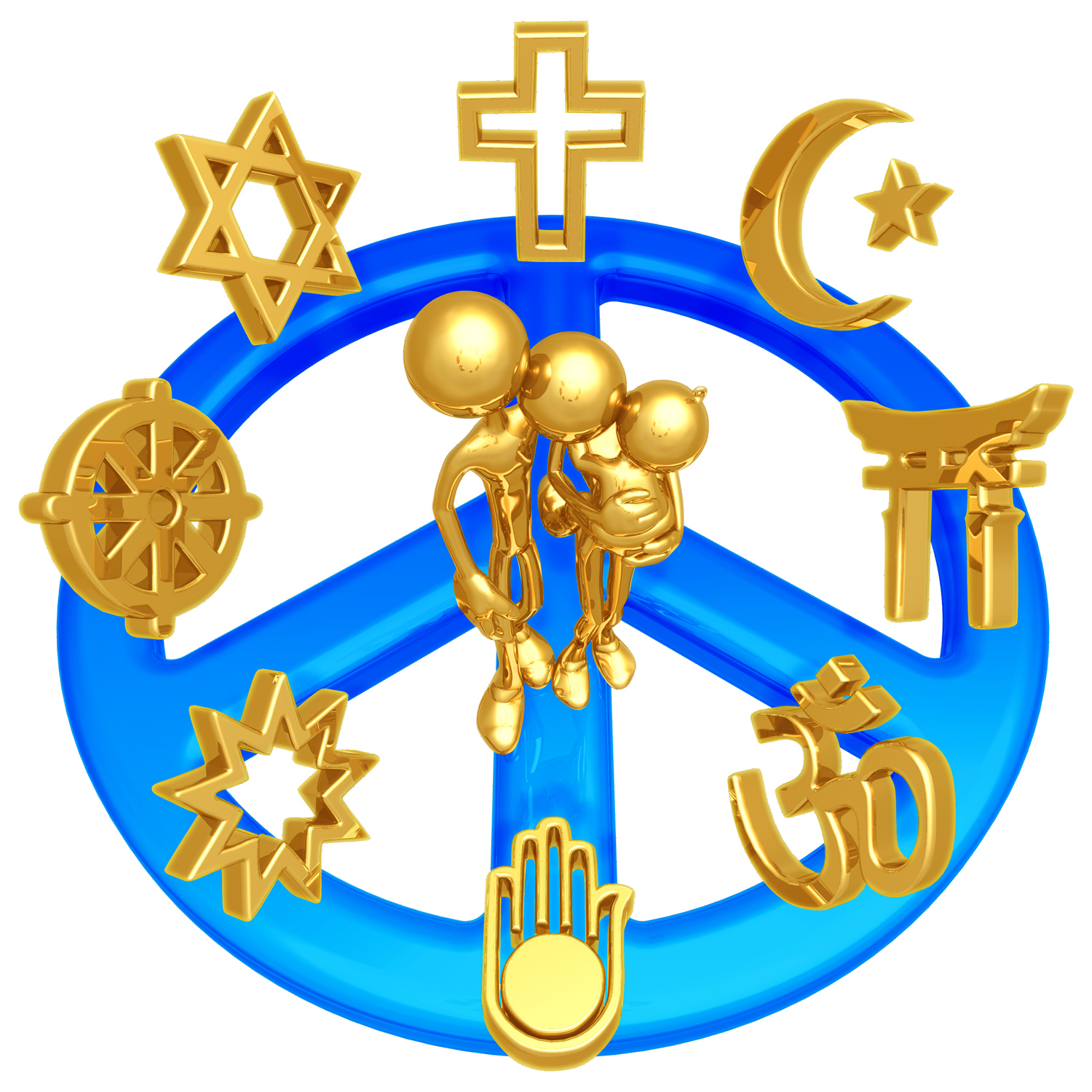
Religions: This section will explore religions throughout the world. First, we will learn about the interaction of man and religion and the different types of religions. This is followed by an in-depth study of the major and minor religions practiced today. We will examine the origins of these religions, their major beliefs, and practices. Image: LuMaxArt, Wikipedia, Creative Commons Attribution-Share Alike 2.0 Generic.
Upon completion of this module, you will be able to:
- Explain the significance of religion as a historical spatial phenomenon. (MLO 1)
- Discuss the world's major religions and their fundamental beliefs. MLO 2)
- Describe the hearths and diffusion patterns of the major religions of the world. (MLO 3)
- Link religious beliefs and values to trade, colonialism, and empire. (MLO 4)
To achieve these objectives:
- Read the Module 6 Introduction
- Read and view the materials in Module 6.
- Read Chapter 6: Religions in Human Geography.
- Complete the Discussion questions and assignment
Module Pressbooks Resources and Activities
You will find the following resources and activities in this module at the Pressbooks website. Click on the links below to access or complete each item.
- Explain the significance of religion as a historical spatial phenomenon. (MLO 1)
-

A common question asked in introductory geography classes is “What is ethnicity and how is it different than race?” The short answer to that question is that ethnicity involves learned behavior and race is defined by inherited characteristics. This answer is incomplete. In reality, both race and ethnicity are complex elements embedded in the societies that house them. The relationship between race, ethnicity and economic class further complicates the answer.
Upon completion of this module, you will be able to:
- Identify the differing bases of ethnic identity (MLO 1)
- Explain the relationship between ethnicity and personal identity (MLO 2)
- Describe the degrees of relevance of ethnicity in a society (MLO 3)
- Link ethnicity, race, and class as they relate to political power (MLO 4)
To achieve these objectives:
- Read the Module 7 Introduction
- Read Chapter 7 in the textbook: Introduction to Human Geography
- Complete the Module 7 Assignment, Discussion Board Posts (3), Chapter Quiz, and H5P activities
Module Pressbooks Resources and Activities
You will find the following resources and activities in this module at the Pressbooks website. Click on the links below to access or complete each item.
-
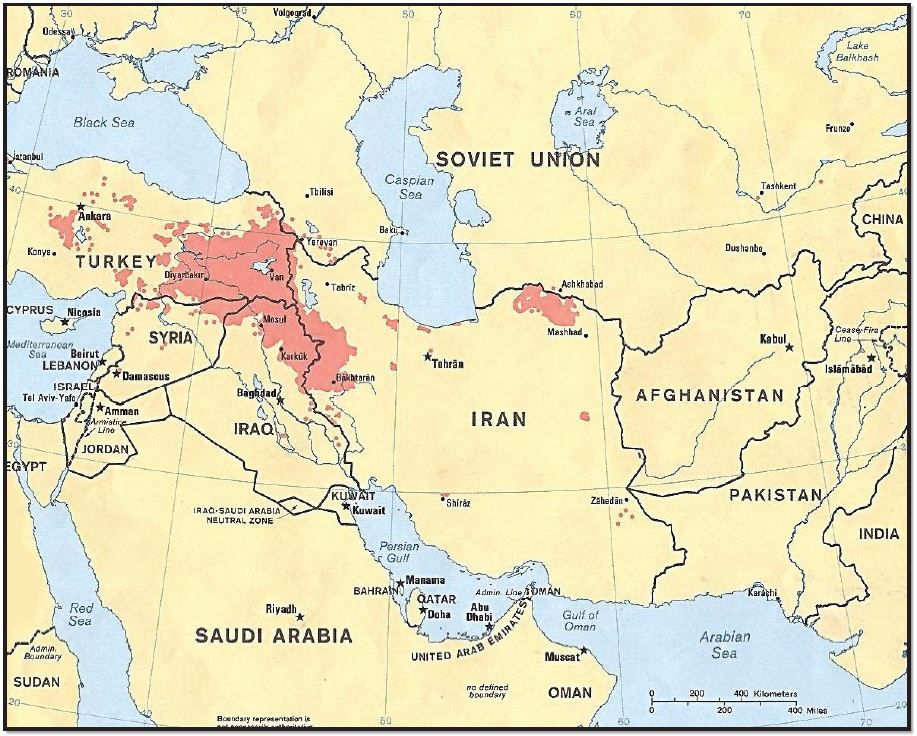
Political geography is the study of the ways in which humans have divided up the surface of the Earth for purposes of management and control. In the United States, many people think of this subdiscipline as being focused on memorizing the states, and state capitals, and perhaps learning the location of various countries around the world. These facts do show how politics is reflected on the surface of the Earth, but political geography is much more than a “trivial pursuit” of such information. (From Puyallup pdf 4.1)
Figure 8.1: Stateless nation: Kurd-majority areas in Turkey, Syria, Iraq, and Iran, Author | U.S. Central Intelligence Agency, Source | Wikimedia Commons, License | Public Domain
Upon completion of this module, you will be able to:
- Explain: how political space is organized. (MLO 1)
- Explain: how states cooperate in military and economic alliances. (MLO 2)
- Describe: the various types of boundaries and how boundary disputes develop. (MLO 3)
- Link: the electoral process in the United States to ethnic, urban/rural, and regional affiliations. (MLO 4)
To achieve these objectives:
- Read the Module 8 Introduction
- Read and view the materials in the Module 8 Pressbooks book
- Read Chapter 8: Political Geography in Introduction to Human Geography.
- Complete the discussion questions,
-
Upon completion of this module, you will be able to:
- Describe: the primary measures and terms associated with wealth, poverty, economic growth, and social improvement for gauging levels of development by region and country. (MLO 1)
- Explain: the two paths to development and the attendant strengths and weaknesses of each. (MLO 2)
- Describe: Regional differences in economic and social development across the world. (MLO 3)
- Link: the processes of globalization to development efforts and outcomes that vary dramatically by place. (MLO 4)
To achieve these objectives:
- Read the Module 9 Introduction
- Read Chapter 9: Development and Wealth in Introduction to Human Geography
- Complete the Discussion questions, Chapter 9 assignments, and Chapter 9 Quiz
Module Pressbooks Resources and Activities
You will find the following resources and activities in this module at the Pressbooks website. Click on the links below to access or complete each item.
-
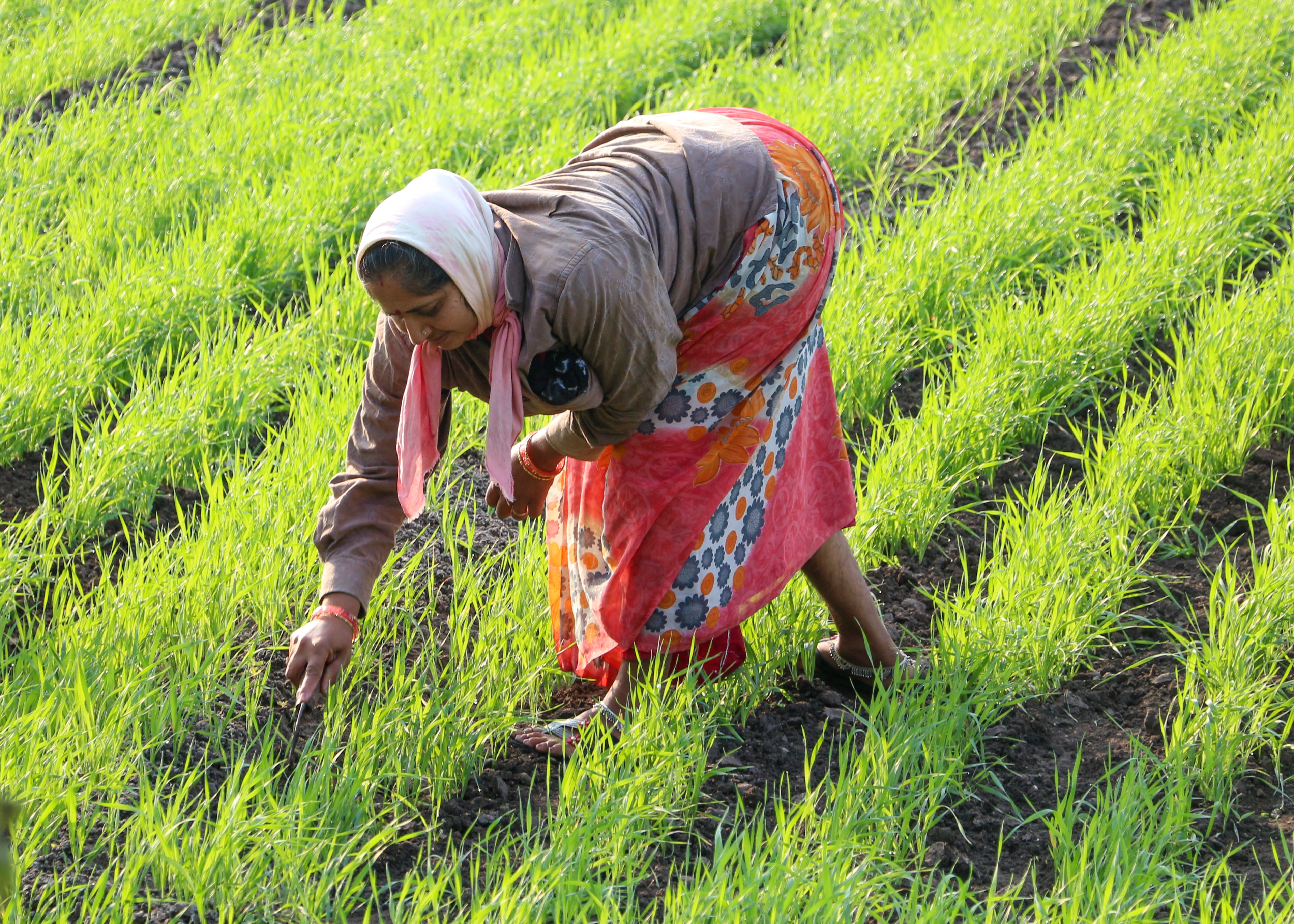
Agriculture is the art and science of cultivating the soil, growing crops and raising livestock. It includes the preparation of plant and animal products for people to use and their distribution to markets. Agriculture provides most of the world’s food and natural resources. These resources, crops as well as the agricultural methods used, vary from one part of the world to another. Agricultural activities are the largest employers of people in the world.
Upon completion of this module, you will be able to:
- Describe: the origin and evolution of agriculture across the globe. (MLO 1)
- Explain: the environment-agriculture relationship, market forces, institutions, agricultural industrialization, and green revolution versus sustainable agriculture. (MLO 2)
- Describe: agricultural regions, comparing and contrasting subsistence and commercial agriculture. (MLO 3)
- Link: the factors of global changes in food production and consumption. (MLO 4)
To achieve these objectives:
- Read the Module 10 Introduction
- Read Chapter 10: Agriculture and Food in Introduction to Human Geography
- Complete the Discussion questions
Module Pressbooks Resources and Activities
You will find the following resources and activities in this module at the Pressbooks website. Click on the links below to access or complete each item.
-
 An industrial landscape of South Louisiana (original photo by contributor — Adam S. Dohrenwend, 2023)
An industrial landscape of South Louisiana (original photo by contributor — Adam S. Dohrenwend, 2023)This section explores the development and geography of industry and other economic activities. First, we will examine the history and development of industry. This is followed by a discussion of industrial location and costs, as well as deindustrialization.
Upon completion of this module, you will be able to:
- Explain: the origins and diffusion of industrial production. (MLO 1)
- Explain: the impact of industry on places. (MLO 2)
- Describe: the industrial basis of modern cultures. (MLO 3)
- Link: Industrialization, technology, the service sector, and globalization. (MLO 4)
To achieve these objectives:
- Read the Module 11 Introduction
- Read and view the materials in Module 11
- Read Chapter 11: Industry in Introduction to Human Geography
- Complete the Discussion questions
Module Pressbooks Resources and Activities
You will find the following resources and activities in this module at the Pressbooks website. Click on the links below to access or complete each item.
- Explain: the origins and diffusion of industrial production. (MLO 1)
-
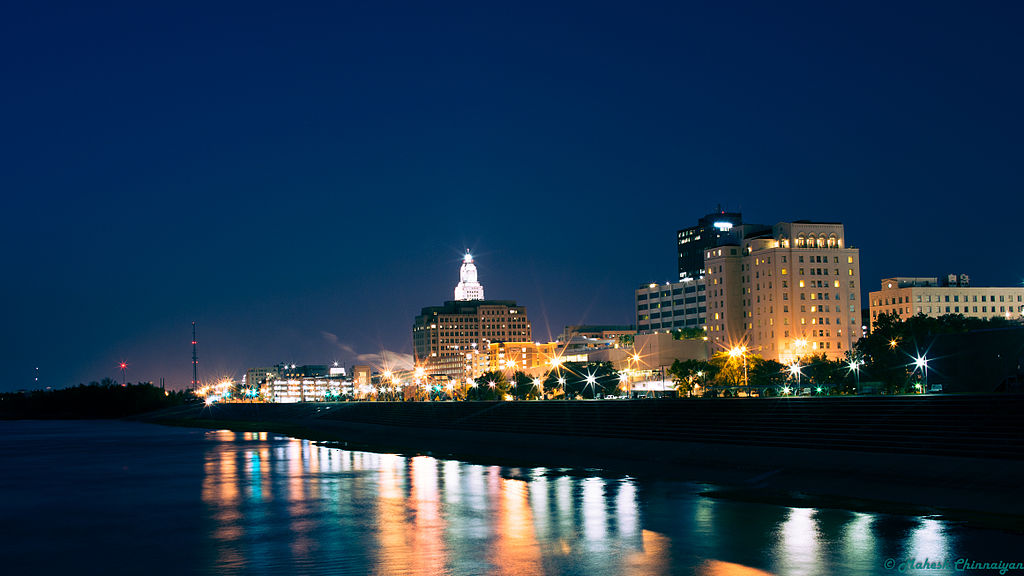
By getmahesh - Flickr: Downtown Baton Rouge, CC BY-SA 2.0, Source: Wikimedia
Rural areas cover a multitude of natural and cultural landscapes, activities, and functions, including not only villages and agricultural areas, ranging from traditional to intensive monoculture systems, forests, various parks, and wilderness, but also services and commercial sites, as well as educational and research centers. Specifically, rural areas provide living space for their inhabitants and flora and fauna and, as buffer zones, fulfill significant balance functions between unpopulated wilderness zones and overloaded centers of dense development. Because of this complex diversity, our understanding of rural areas must consider more than how land is used by nature and humans. That is, our understanding must also encompass the economic and social structures in rural areas in which farming and forestry, handicraft, and small, middle, or large companies produce and trade, where services, from the most local to the most international (such as tourism), are provided. In addition, some rural areas represent valuable ecological balance zones through preservation and/or conservation establishments. All these factors create and evolve into a tight interdependence, interconnection, and competition.
Yet, today, over 54 percent of the world population (7,536 million)1 lives in urban areas and the proportion of the urban population is growing rapidly. Thus, urbanization is one of the most important geographic phenomena in today’s world. Towns and cities are in constant flux. Historically, cities have been influenced by technological developments such as the steam engine, railroads, the internal combustion engine, air transport, electronics, telecommunications, robotics, and the internet. As the result of the global shift to technological-, industrial-, and service-based economies, the growth of cities and urbanization of rural areas are now irreversible. Moreover, another phase of transformation is underway, involving global processes of economic, cultural, and political changes.
Within the cities of the developed world, the economic reorganization has determined a selective recentralization of residential and commercial land use connected especially with a selective industrial decentralization. In contrast to the core regions, where urbanization has largely resulted from economic growth, the urbanization of peripheral regions has been a consequence of demographic growth, generating large increases in population (overurbanization) well in advance of any significant levels of urban or rural economic development. Luxury homes and apartment complexes, corresponding with a dynamic formal sector of the economy, contrast sharply with the slums and squatter settlements of people, working in the informal (not regulated by the state) sector.
Upon completion of this module, you will be able to:
- Describe the similarities and differences between rural and urban. (MLO 1)
- Explain urban origins and how the earliest settlements developed independently in the various hearth areas. (MLO 2)
- Describe the models of rural and urban structure, comparing and contrasting urban patterns in different regions of the world. (MLO 3)
- Link the nature and causes of the problems associated with overurbanization in developing countries. (MLO 4)
To achieve these objectives:
- Read the Module 12 Introduction
- Read and view the materials in the Module 12 Moodle
- Read Chapter 12: Human Settlement in Introduction to Human Geography Pressbooks book
- Complete the three assignments, Human Settlements, Metropolitan Areas, and Traditional Circular Villages.
Module Pressbooks Resources and Activities
You will find the following resources and activities in this module at the Pressbooks website. Click on the links below to access or complete each item.
-
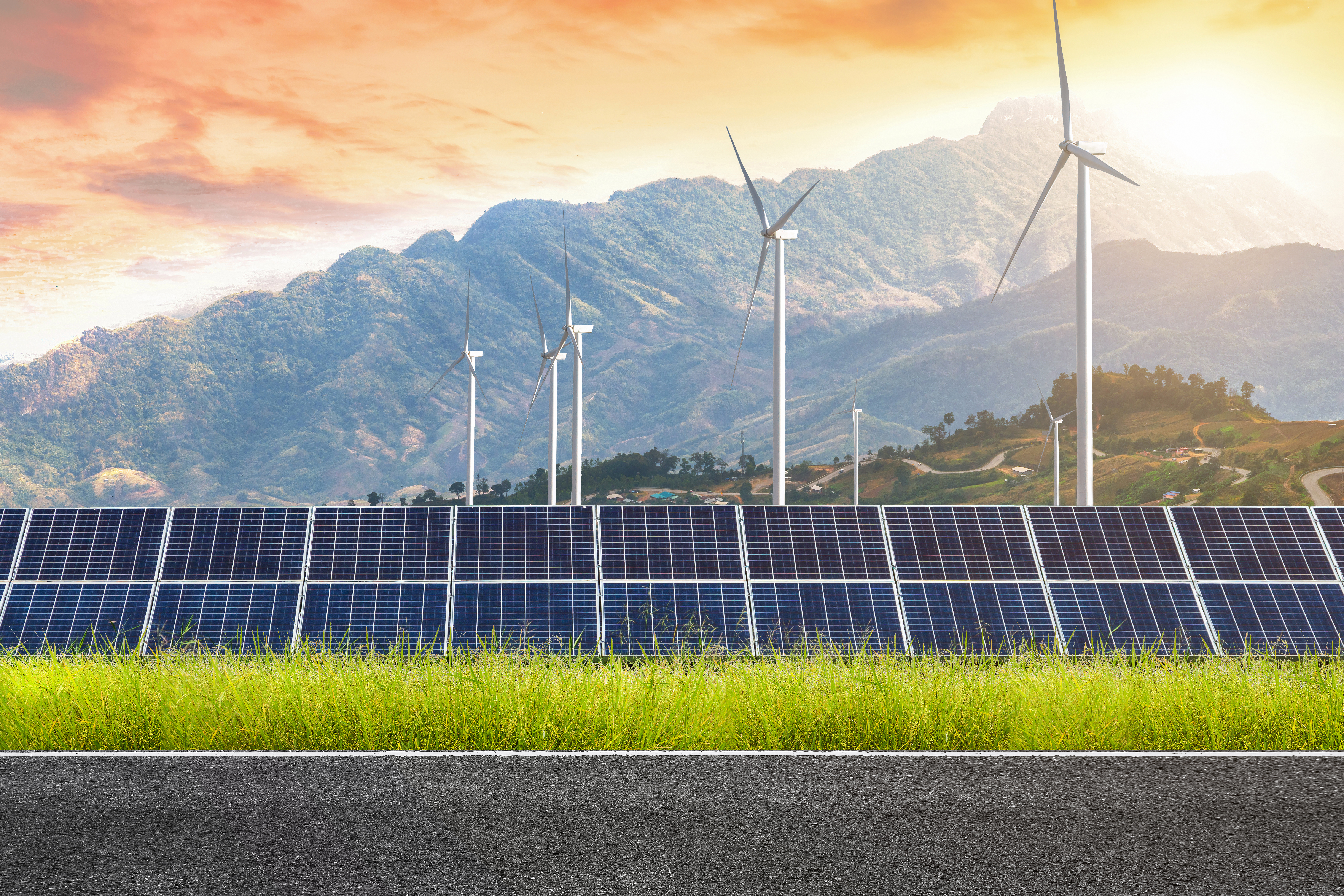 Wind Turbines Stock photos by Vecteezy
Wind Turbines Stock photos by VecteezyA discussion of resources makes an excellent capstone for this textbook, as most major topics discussed previously relate to the consumption of resources in some way. The increase in Global population means a greater demand for resources. Job opportunities in fossil fuel mining and drilling are a significant pull factor for migration in many countries where fossil fuel extraction is an important part of the economy.
Upon completion of this module, you will be able to:
- Identify the problems associated with the demand for
nonrenewable energy resources and the available supply. (MLO 1)
- Explain the issues associated with the pollution of air, land, and water. (MLO 2)
- Describe the types of renewable and alternative energy resources and global initiatives to leverage these resources. (MLO 3)
- Link preservation efforts worldwide to anthropogenic pressures on the environment. (MLO 4)
To achieve these objectives:
- Read the Module 13 Introduction
- Read Chapter 13, Environment and Resources in the textbook: Introduction to Human Geography
- Complete the Module 13 Assignment, Discussion Board Posts (3), Chapter Quiz, and H5P activities
Module Pressbooks Resources and Activities
You will find the following resources and activities in this module at the Pressbooks website. Click on the links below to access or complete each item.
- Identify the problems associated with the demand for
nonrenewable energy resources and the available supply. (MLO 1)
